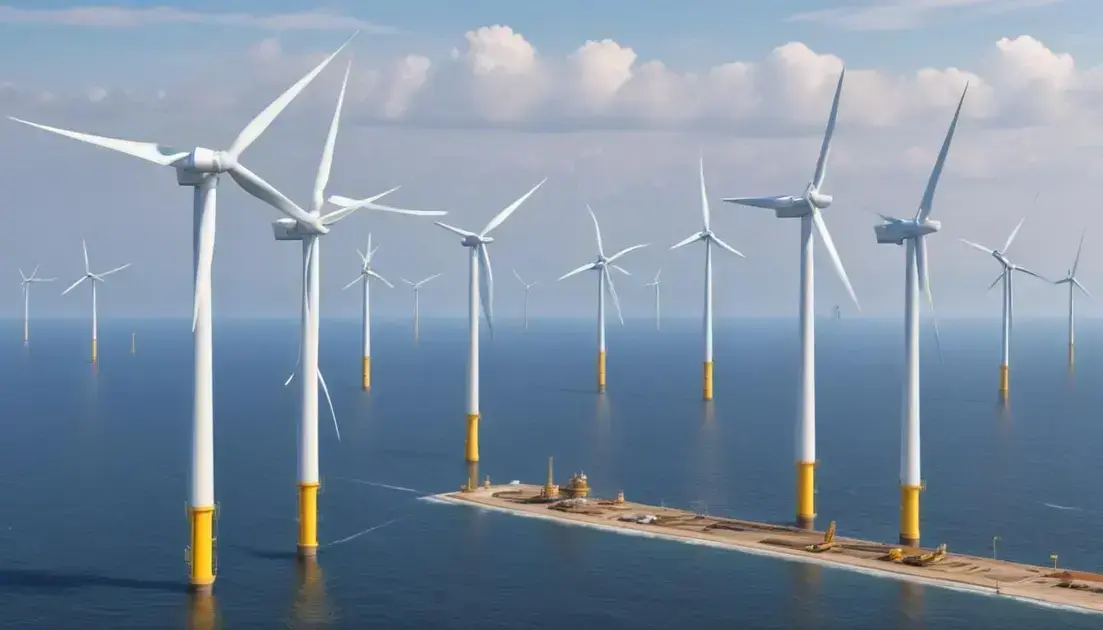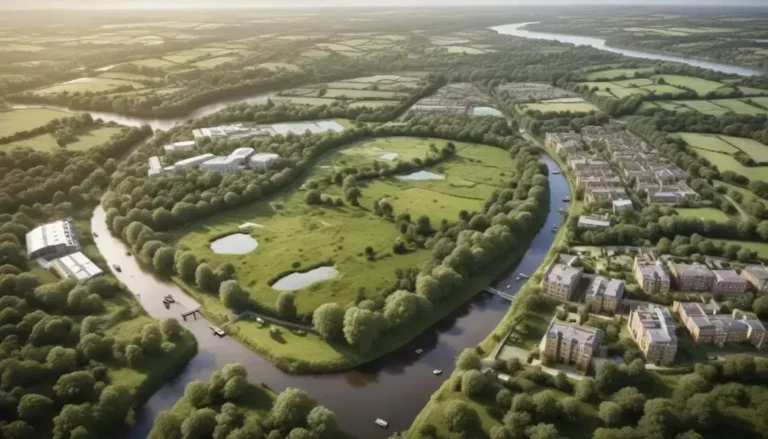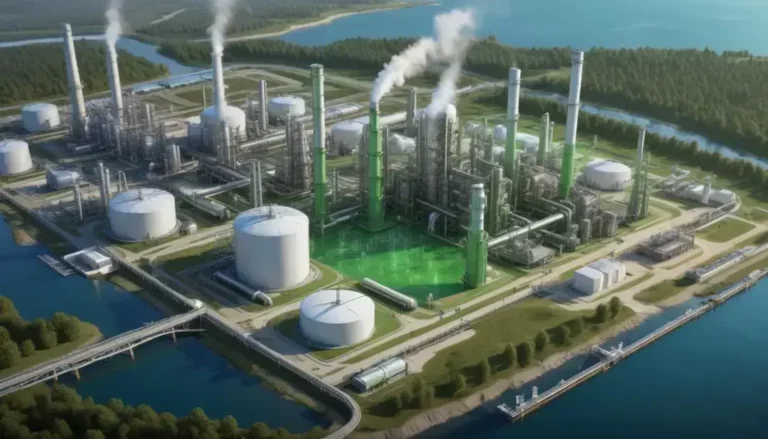Vattenfall’s Ambitious Offshore Wind Project in Germany
The Nordlicht Project is a groundbreaking offshore wind farm in Germany, designed to generate 1.5 gigawatts of clean energy, significantly contributing to the country’s renewable energy goals and reducing carbon emissions.
In an exciting development for renewable energy, offshore wind farm projects are gaining momentum in Germany, with Vattenfall leading the charge. Discover how this venture will reshape the energy landscape.
Introduction to the Nordlicht Project
The Nordlicht Project represents a groundbreaking initiative in the realm of offshore wind energy, with Vattenfall leading the charge. This ambitious venture aims to harness the power of the North Sea to generate clean energy for millions. With a capacity of 1.5 gigawatts, the project is set to become Germany’s largest offshore wind farm, paving the way for a sustainable energy future.
The planning phase has seen extensive collaboration with local stakeholders and environmental groups, ensuring a responsible approach to energy production. By engaging with community members, Vattenfall addresses concerns about the impact on marine life and local ecosystems, fostering a sense of partnership and shared goals.
Furthermore, the project is positioned to support Germany’s commitment to reducing carbon emissions and transitioning towards renewable energy sources. By 2030, the aim is to have about 30 gigawatts of installed offshore wind capacity in the country. The Nordlicht Project is a vital step towards achieving these ambitious targets, showcasing innovative solutions in renewable energy.
Overview of Vattenfall’s Investment
Vattenfall has committed to a substantial investment in the Nordlicht Project, channeling over €4 billion into this transformative offshore wind farm. This funding is essential for constructing and operating over 100 wind turbines capable of generating 1.5 gigawatts of clean energy. The scale of this investment underscores Vattenfall’s dedication to advancing renewable energy and complying with ambitious climate targets.
This significant financial backing allows for the integration of cutting-edge technology and innovative engineering practices. One notable aspect of Vattenfall’s strategy is the focus on sustainable sourcing of materials. The company is prioritizing eco-friendly components and construction methods that minimize environmental impact.
Furthermore, Vattenfall’s investment is not just about infrastructure; it encompasses job creation and local economic stimulation. The project is expected to generate thousands of jobs during construction and ongoing operations, contributing positively to the regional economy.
As part of its wider sustainability goals, Vattenfall aims to have climate-neutral operations by 2030. The Nordlicht Project aligns perfectly with these objectives, marking a milestone in the journey towards a greener future.
Capacity and Power Generation
The Nordlicht Project is set to revolutionize energy production in Germany, boasting an impressive capacity of 1.5 gigawatts. This figure is equivalent to powering approximately 1.6 million households, significantly contributing to the nation’s renewable energy goals. The capacity of the offshore wind farm illustrates the potential of wind energy to support a transition away from fossil fuels.
Each turbine within the Nordlicht Project is engineered for efficiency, optimized to capture wind from various directions and speeds. With over 100 state-of-the-art turbines planned, this farm will utilize cutting-edge technology to maximize energy generation. The design and placement of turbines are strategically chosen to harness the North Sea’s strong and consistent winds.
This project emphasizes Vattenfall’s commitment to sustainable power generation. By investing in renewable technologies, Vattenfall not only aids in reducing carbon emissions but also enhances energy security for the region. The generated electricity will be fed into the national grid, bolstering Germany’s efforts to achieve a climate-neutral economy by 2045.
Additionally, engaging with local communities about power generation and its benefits plays a crucial role in this initiative. Informing residents about the impact and advantages of the project fosters a supportive atmosphere for renewable energy advancements.
Collaboration with BASF
The collaboration between Vattenfall and BASF marks a significant milestone in the Nordlicht Project, emphasizing sustainable innovation in renewable energy. BASF, a global leader in chemical production, is partnering with Vattenfall to develop advanced technologies that enhance the efficiency and sustainability of offshore wind farms. This partnership aims to optimize energy production while minimizing environmental impacts.
One of the key areas of focus in this collaboration is the development of eco-friendly materials for turbine components. By utilizing BASF’s expertise in chemical engineering, the project seeks to implement materials that are both strong and lightweight, improving the overall performance of the turbines. This innovation is crucial for maximizing energy output and ensuring long-term durability.
Moreover, the partnership highlights a commitment to shared environmental goals. By working together, Vattenfall and BASF are addressing the urgent need for carbon reduction in energy production. Their efforts reflect a forward-thinking approach that combines cutting-edge technology with eco-conscious practices.
The collaboration not only enhances the technical aspects of the Nordlicht Project but also sets a precedent for future partnerships in the renewable energy sector. It signals a growing trend where companies unite to tackle the challenges of sustainable energy, creating a brighter and more efficient future for all.
Environmental Impact
The Nordlicht Project places significant emphasis on minimizing its environmental impact while maximizing renewable energy generation. As an offshore wind farm, it has the potential to become a cornerstone of Germany’s efforts in tackling climate change by reducing carbon emissions. By harnessing wind energy, the project will help displace fossil fuel consumption, significantly cutting down greenhouse gas emissions.
Moreover, meticulous planning and environmental assessments are integral to the project’s development. Vattenfall has engaged with environmental experts to ensure that the construction and operation of the wind farm align with ecological preservation. This includes thorough studies on local marine ecosystems to mitigate any disruptions that may arise during the installation of wind turbines.
Noise and visual pollution are common concerns associated with offshore wind farms. Vattenfall is taking these aspects seriously, implementing technologies designed to lower noise levels during construction and operation. Additionally, the aesthetic impact on coastal areas is being examined to maintain the integrity of the landscape.
The collaboration with local communities is a vital aspect of managing the environmental impact. Engaging stakeholders in discussions allows residents to voice their concerns, leading to greater transparency and community support. This approach exemplifies Vattenfall’s commitment to sustainable development in the energy sector, ensuring that environmental integrity is maintained throughout the lifecycle of the project.
Construction Timeline
The construction timeline for the Nordlicht Project is meticulously planned to ensure efficiency and timely completion. Commencing in early 2024, the first phase involves extensive site preparations, which include environmental assessments and logistical planning. This groundwork is crucial for setting the stage for the construction of wind turbines in the North Sea.
From mid-2024 to late 2025, the installation phase will begin. During this period, over 100 wind turbines will be erected, utilizing advanced marine construction techniques. The objective is to complete the installation within one year, minimizing disruption to marine life and optimizing resource use.
Once the turbines are installed, testing and commissioning will take place throughout 2026. This phase ensures that each turbine operates effectively and safely, conforming to rigorous quality standards. The testing period is vital for addressing any issues before the facility goes fully operational.
By the end of 2026, the Nordlicht Project is expected to begin generating clean energy, contributing significantly to Germany’s renewable energy targets. The entire construction process emphasizes sustainability and innovation, reflecting Vattenfall’s commitment to responsible energy development. Regular updates will be provided to stakeholders and the community to maintain transparency throughout the project.
Significance for Germany’s Energy Goals
The Nordlicht Project plays a crucial role in advancing Germany’s energy goals, particularly its commitment to transitioning towards renewable energy. With a target of generating 30 gigawatts of offshore wind energy by 2030, this project is positioned to significantly contribute to that ambition. By supplying clean energy to approximately 1.6 million households, Nordlicht aids in reducing dependency on fossil fuels.
This project aligns seamlessly with Germany’s broader environmental objectives, such as achieving climate neutrality by 2045. By integrating renewable sources like wind energy into the national grid, Germany can drastically lower its carbon emissions and enhance energy security. The Nordlicht Project emphasizes the importance of sustainability in energy production, setting a benchmark for future initiatives.
Moreover, the project’s significance extends beyond immediate energy supply. It also acts as a model for public-private partnerships in the energy sector, inspiring collaboration between governmental bodies and private enterprises. Such collaborations are essential for funding and innovation in clean energy technologies.
The deployment of offshore wind farms is not merely an infrastructural change; it signifies a broader societal shift towards ecological responsibility. As the Nordlicht Project unfolds, it will not only provide clean energy but also foster economic growth and job creation, further solidifying Germany’s position as a leader in renewable energy.
Future Prospects for Offshore Wind Energy
The future of offshore wind energy looks exceptionally promising, particularly with projects like the Nordlicht Project leading the way. As countries strive to meet ambitious environmental targets, offshore wind farms are becoming a pivotal part of the energy landscape. With advancements in technology, efficiency, and sustainability, the growth potential for this sector is immense.
Experts predict that by 2030, the capacity for offshore wind energy could quadruple globally. This increase will be driven by innovations in turbine design and installation techniques, making wind farms more efficient and cost-effective. Additionally, a greater focus on energy storage solutions will enhance the reliability of wind energy, allowing it to better meet demand.
Governments are increasingly recognizing the importance of offshore wind energy in achieving climate goals. Policies supporting the expansion of renewable energy infrastructures will bolster investment in new projects. This regulatory support is crucial for attracting funding and resources necessary for further development.
Moreover, public awareness about the benefits of renewable energy continues to grow. As communities embrace the shift towards sustainable energy sources, the adoption of offshore wind projects will likely gain momentum. Ultimately, the continued investment in offshore wind energy will play a vital role in driving economic growth, creating jobs, and fostering a greener future.
In conclusion, the impact of the Nordlicht Project on renewable energy
The Nordlicht Project marks a significant step forward for offshore wind energy in Germany. It not only aims to provide clean energy to millions but also demonstrates how important investments can lead to a sustainable future.
Through innovative technology and strong collaborations, Vattenfall is setting a benchmark for other renewable energy projects. This initiative aligns with Germany’s climate goals, showcasing the country’s commitment to reducing carbon emissions and embracing green technology.
As we look ahead, the continued growth of offshore wind energy is crucial. It will play a vital role in meeting energy demands while protecting our environment. The Nordlicht Project is just the beginning of a cleaner, greener energy landscape.
By supporting projects like Nordlicht, we contribute to a more sustainable world for future generations.
Frequently Asked Questions
What is the Nordlicht Project?
The Nordlicht Project is an offshore wind farm initiative by Vattenfall in Germany, aiming to generate 1.5 gigawatts of clean energy to power around 1.6 million households.
How does the Nordlicht Project contribute to Germany’s energy goals?
It significantly aids Germany’s commitment to reducing carbon emissions and increasing the share of renewable energy in their energy mix, aligning with the country’s climate targets.
What are the environmental considerations for the project?
The project emphasizes minimizing environmental impact through careful planning, marine ecosystem assessments, and sustainable construction practices.
What technology is being used in the Nordlicht Project?
The project incorporates state-of-the-art wind turbines designed for efficiency and eco-friendly materials to enhance sustainability.
How will the Nordlicht Project create jobs?
It is expected to generate thousands of jobs during the construction phase and ongoing operations, contributing positively to the local economy.
What is the future of offshore wind energy in Germany?
The future looks promising with expected growth in offshore wind capacity, which will help meet energy demands and foster sustainable development.






